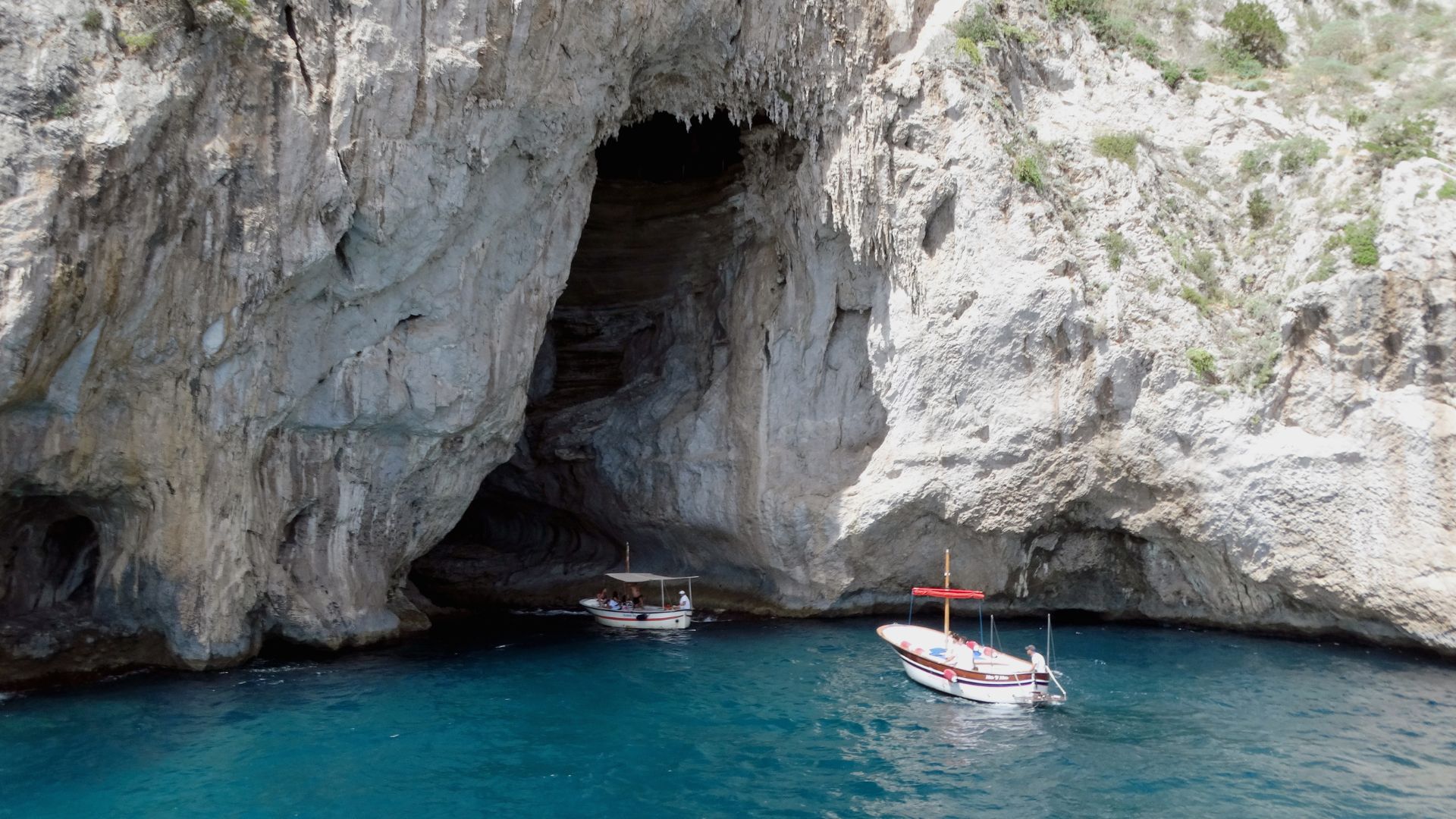Imagine floating in the crystal-blue waters where Roman emperors once swam nearly 2,000 years ago. The Blue Grotto of Capri, Italy isn’t just a stunning sea cave with glowing azure waters – it was Emperor Tiberius’ private swimming hole during the 1st century A.D. While swimming is officially not allowed during regular visiting hours, some adventurous travelers (myself included) have experienced the magic of these waters by visiting after hours.
I’ll never forget slipping into those luminous blue waters, feeling the weight of history around me. The complex geometry of the cave creates an otherworldly atmosphere, with light reflecting through an underwater opening to create the famous blue glow.
Ancient Romans believed this place had special powers, and Tiberius himself used it as both a personal swimming pool and a marine temple.
My journey to Capri revealed that the Blue Grotto holds more secrets than just its stunning color. Archaeologists have discovered Roman statues dating back to the 1st century within the cave, confirming its importance to Tiberius and his court. Some local legends even suggest hidden passages that may have connected to the emperor’s villa above – pathways I couldn’t help but search for while exploring the rocky coastline around the grotto.
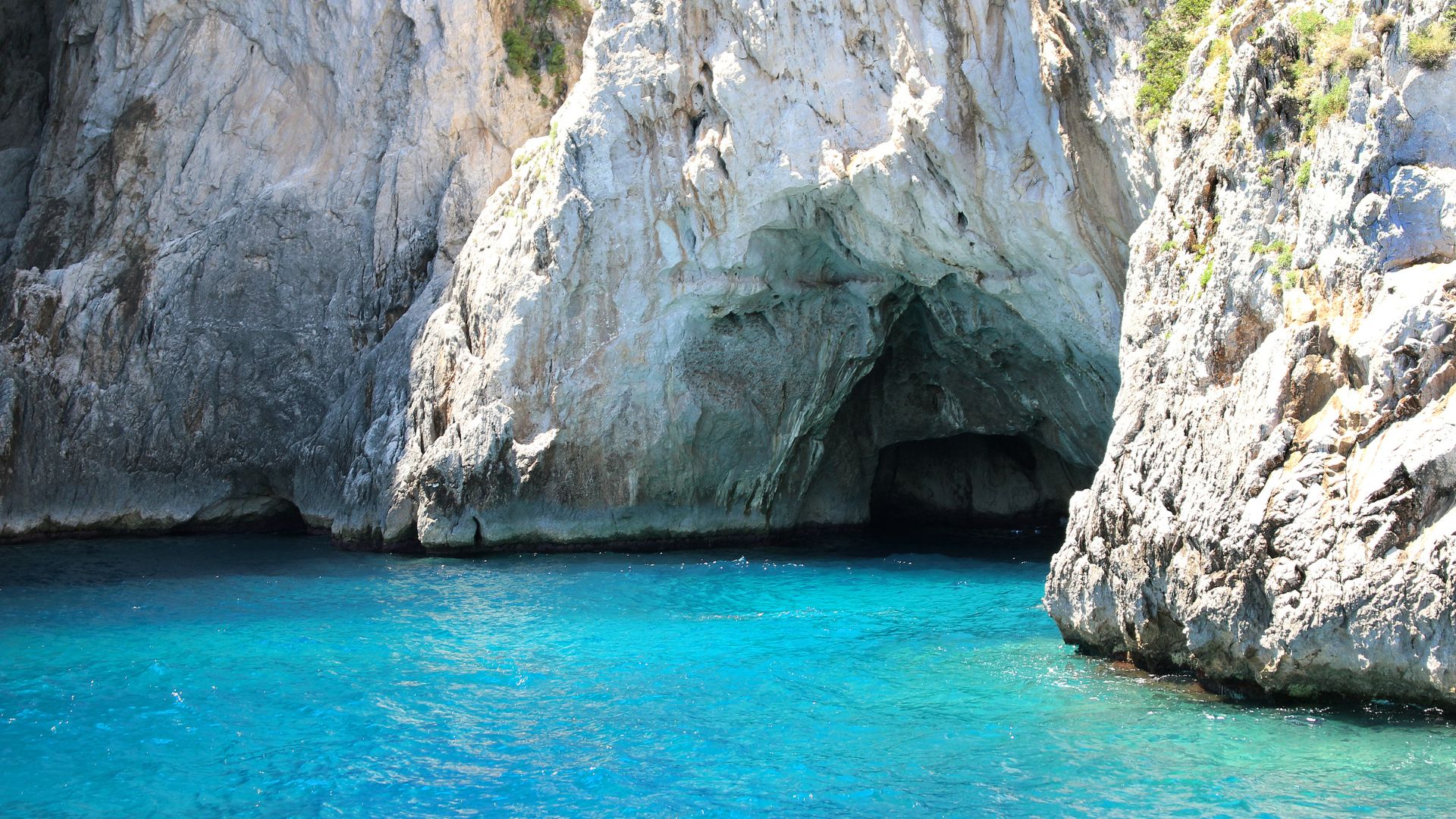
The Lure of Capri’s Blue Grotto
The Blue Grotto (Grotta Azzurra) on the coast of Capri is one of Italy’s most enchanting natural wonders. This sea cave has captivated visitors for centuries with its magical blue light and fascinating history.
A Portal to Ancient Times
I first heard about the Blue Grotto’s connection to Emperor Tiberius while planning my trip to Capri. This wasn’t just any sea cave – it was reportedly the private swimming hole of the second Roman Emperor during the 1st Century A.D.
Walking along the same paths as Roman nobility gave me chills. Tiberius, who ruled from his villa on Capri, apparently used this grotto not just for swimming but possibly as a marine temple.
The cave remained largely forgotten after the Roman era until 1826, when German poet August Kopisch rediscovered it. Locals had avoided it, believing it was haunted by spirits.
Today, entering through the tiny opening feels like slipping through a portal in time. The narrow entrance requires lying flat in small rowboats – the same challenging access that kept this wonder hidden for centuries.
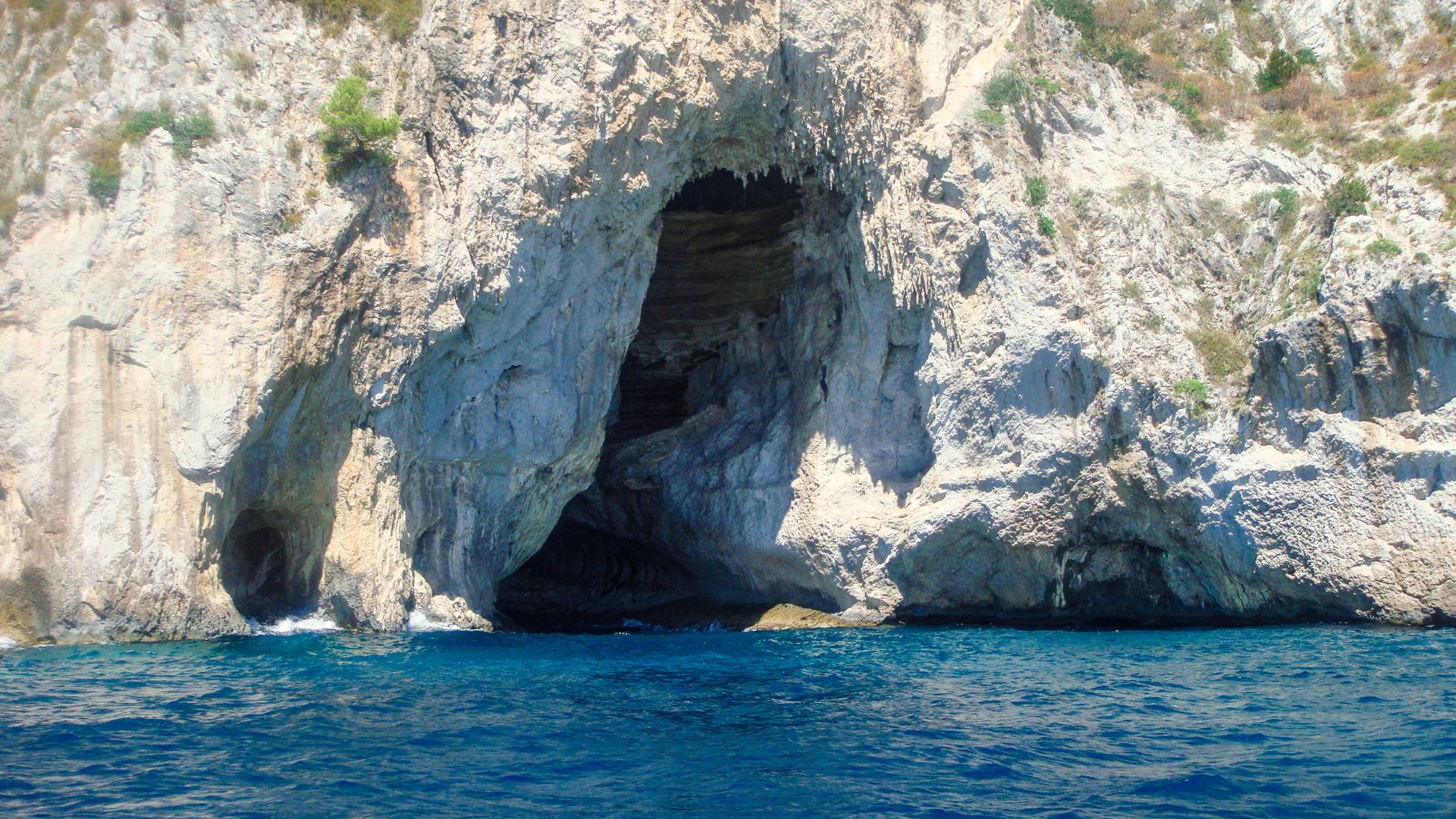
The Phenomenon of the Blue Light
What makes this grotto truly magical is its otherworldly blue illumination. I was stunned by the intensity of the cobalt blue water when I visited.
The science behind this phenomenon is fascinating. Sunlight enters through an underwater cavity beneath the cave entrance. The light filters through the water, and most red tones get absorbed, leaving only the blue light to illuminate the cavern.
This creates an ethereal blue glow that seems to come from within the water itself. Objects placed in the water appear silver due to the air bubbles clinging to their surface.
The best time to visit is between 12 PM and 2 PM when the sunlight position creates the most vibrant blue effect. The cave stretches about 50 meters into the cliff with a ceiling that rises 15 meters above the water.
Boat tours operate daily from 9 AM to 5 PM, weather permitting, with entrance tickets costing around €18.

Emperor Tiberius and His Island Retreat
Capri served as Emperor Tiberius’ paradise, where he spent the final decade of his reign away from Rome’s political chaos. This stunning Mediterranean island became home to not just one, but twelve imperial villas built for the emperor’s pleasure and seclusion.
Villa Jovis: The Imperial Residence
Villa Jovis stands as the most impressive of Tiberius’ island retreats. Built in 27 AD, this massive complex crowns Mount Tiberio at Capri’s northeastern tip, offering commanding views of the Bay of Naples and the surrounding coastline.
I was amazed by the villa’s sophisticated engineering when I visited. Despite being nearly 2,000 years old, you can still see the impressive cisterns that collected rainwater for the emperor’s personal use. The villa spread across multiple levels with separate areas for imperial apartments, servants’ quarters, and ceremonial spaces.
Tiberius reportedly conducted government business from this clifftop residence for ten years, preferring Capri’s tranquility to Rome’s intrigues. Local guides pointed out “Tiberius’ Leap,” a precipitous cliff where, according to legend, the emperor had unwanted visitors thrown to their deaths.
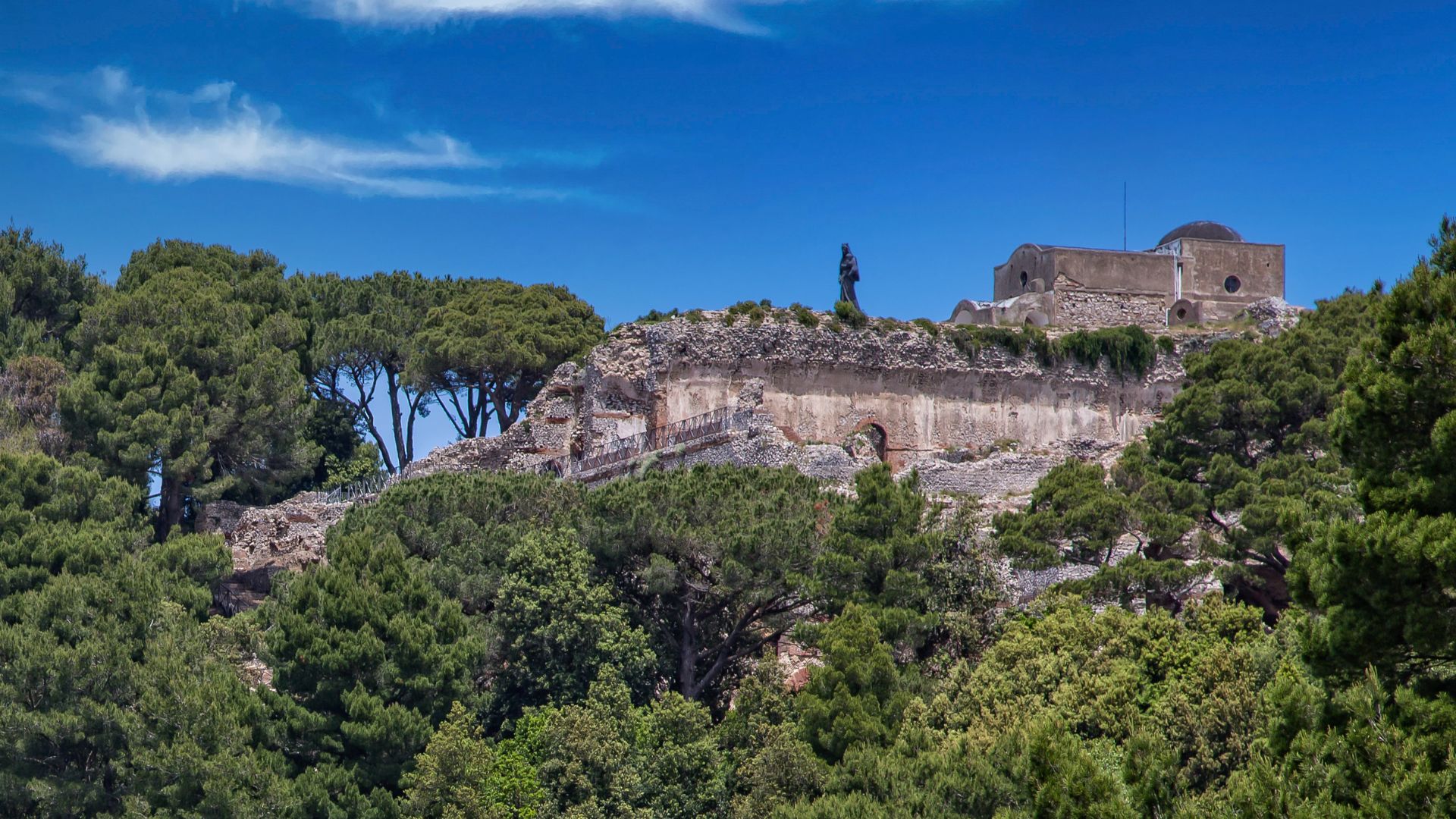
Tiberius and the Sea: A Connection
The emperor’s fascination with the sea is evident throughout his Capri residences. I found it fascinating how he incorporated the island’s natural maritime features into his architectural designs.
The Blue Grotto (Grotta Azzurra) served as Tiberius’ private swimming pool, decorated with ancient Roman statues that created an underwater sanctuary. Archaeologists discovered statue fragments depicting sea nymphs and marine deities that once adorned this magical sea cave.
Tiberius’ villas featured private access points to the Mediterranean, allowing him to enjoy sea bathing away from public view. His engineers constructed private docks and swimming platforms into the rocky coastline.
The maritime connection wasn’t merely recreational. The sea provided security for the paranoid emperor, creating a natural barrier that controlled access to his island sanctuary and protected him from potential assassins.
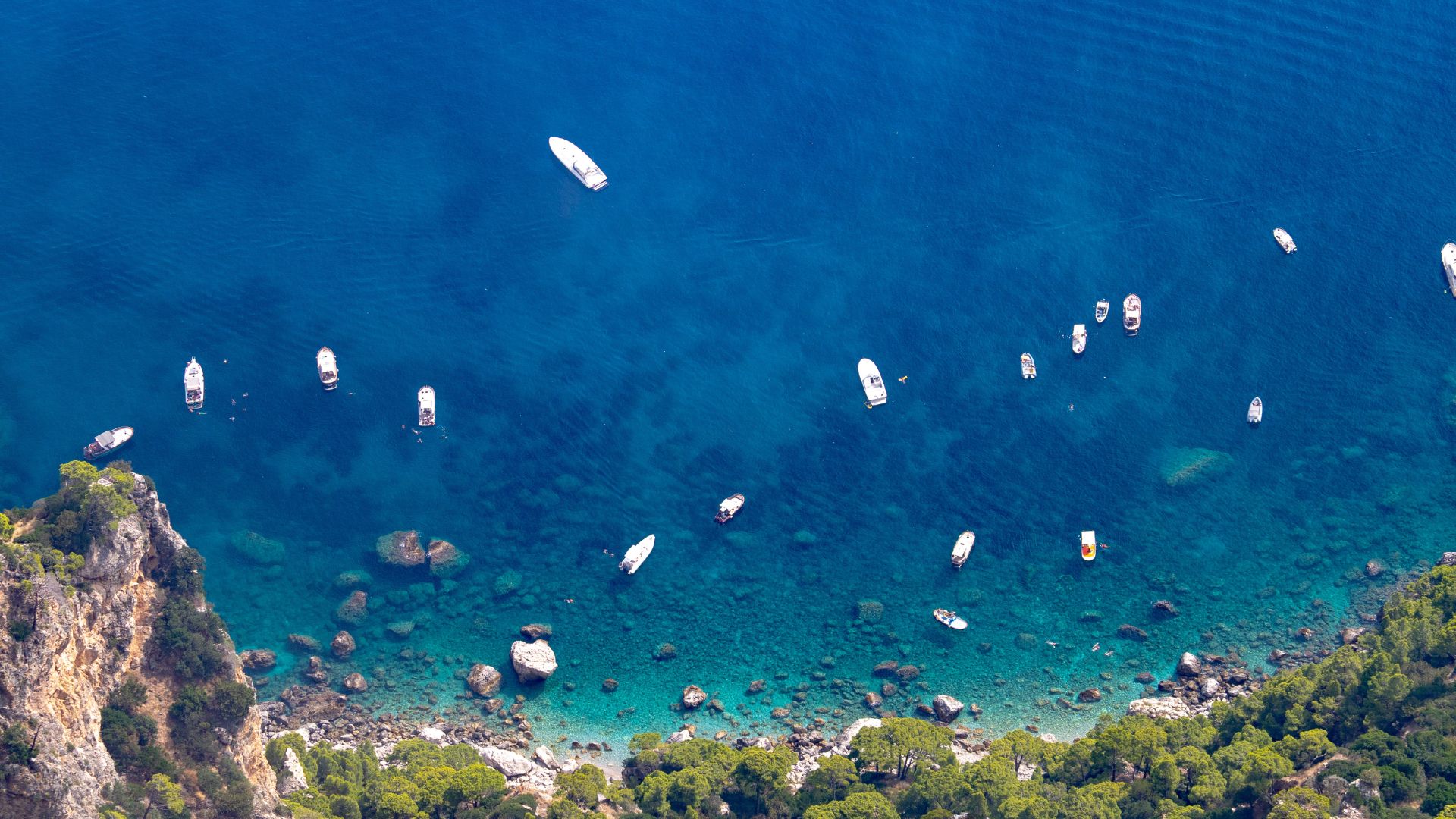
Swimming with Legends
The Blue Grotto of Capri offers more than just beautiful waters – it’s a swim through history and mythology. When you enter these azure waters, you’re bathing where Roman emperors once did, surrounded by the same mystical atmosphere that inspired ancient tales.
The Mythical Experience
Swimming in the Blue Grotto feels like entering another world. The water glows with an otherworldly blue light that seems almost magical. Emperor Tiberius used this cave as his private swimming pool during his reign, and I could easily imagine why he chose this spot.
The Romans believed these caves were home to sea nymphs and sirens. As I floated in the luminescent water, I could almost hear their whispered songs echoing off the walls. Many visitors report feeling a strange connection to the past here.
The cave walls contain ancient carvings and depictions of sea gods that date back to Tiberius’ time. These weathered images add to the mystical atmosphere as you swim through history.

Unraveling the Odyssey
Getting to swim in the Blue Grotto is an adventure in itself. The entrance is tiny – barely one meter high – and you’ll need to lie flat in a small rowboat to enter during low tide. Sometimes the cave is closed due to high waters or rough seas.
The best time to visit is between noon and 2 PM when the sunlight creates the most intense blue effect. I recommend booking a private tour that includes swimming privileges, as not all standard tours allow it.
The experience of floating where Roman emperors once swam is unforgettable. The water is surprisingly warm and incredibly clear. You might spot ancient Roman artifacts beneath you as you swim – fragments of what was once Tiberius’ personal marine playground.
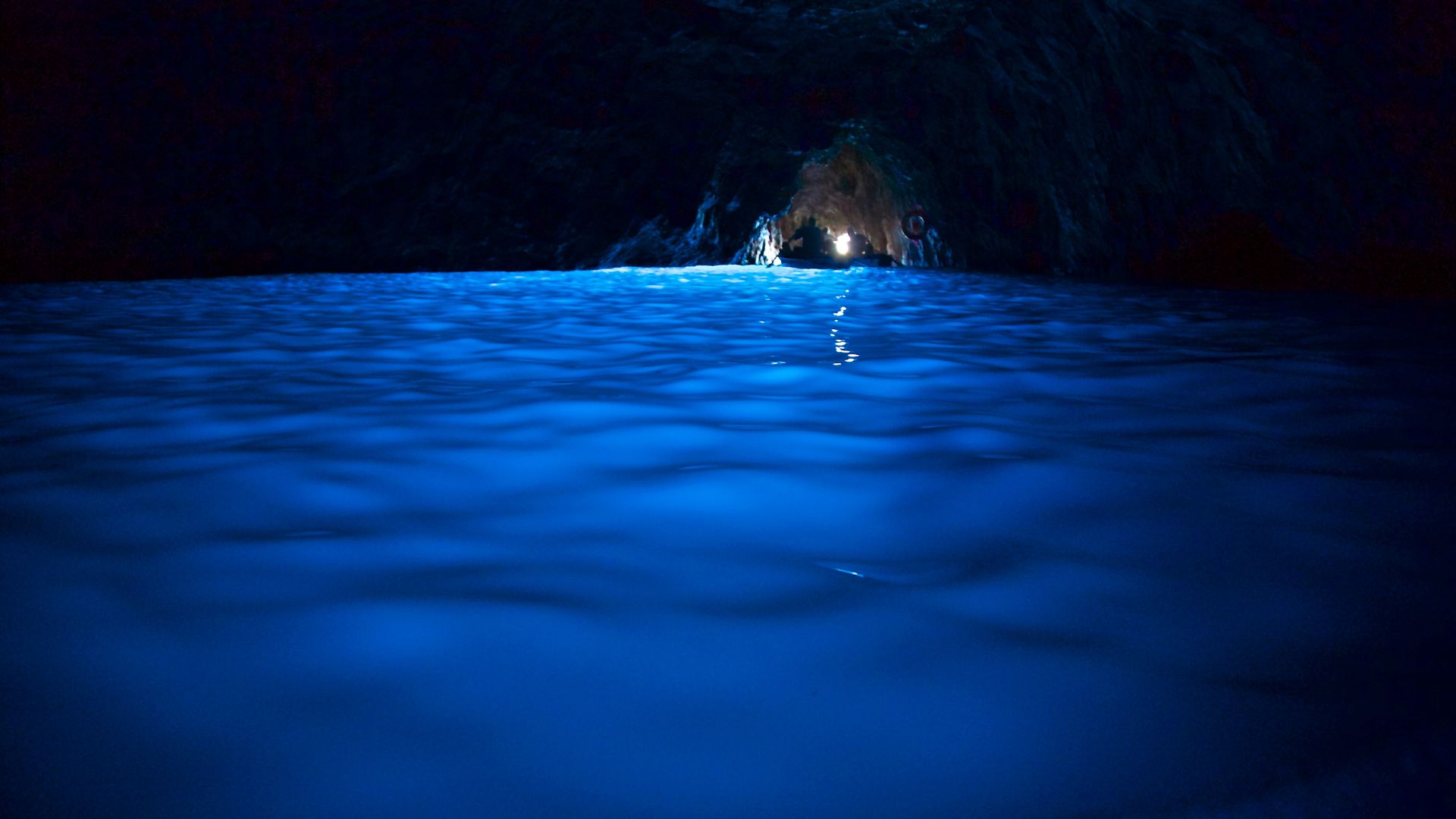
Rediscovering Tiberius’ Lost Treasures
The discovery of Emperor Tiberius’ treasures in Sperlonga happened by chance in 1957, revealing an incredible collection of sculptures that had been hidden for centuries beneath sand and water.
Underwater Surveys and Discoveries
I was amazed to learn that the initial discovery came when workers were clearing the area for a new coastal road. They stumbled upon what would become one of Italy’s most significant archaeological finds. After this discovery, teams conducted careful underwater surveys of the grotto and surrounding areas.
Divers found a large circular basin filled with thousands of marble fragments. These pieces were carefully extracted from the sand of the “Antro di Tiberio” (Cave of Tiberius). It was like putting together an enormous puzzle.
The Archaeological Superintendency worked with Marevivo, a marine conservation organization, to ensure the underwater explorations didn’t damage the site. Their careful mapping revealed statue bases and other structural elements of what was once Tiberius’ luxurious swimming pool.
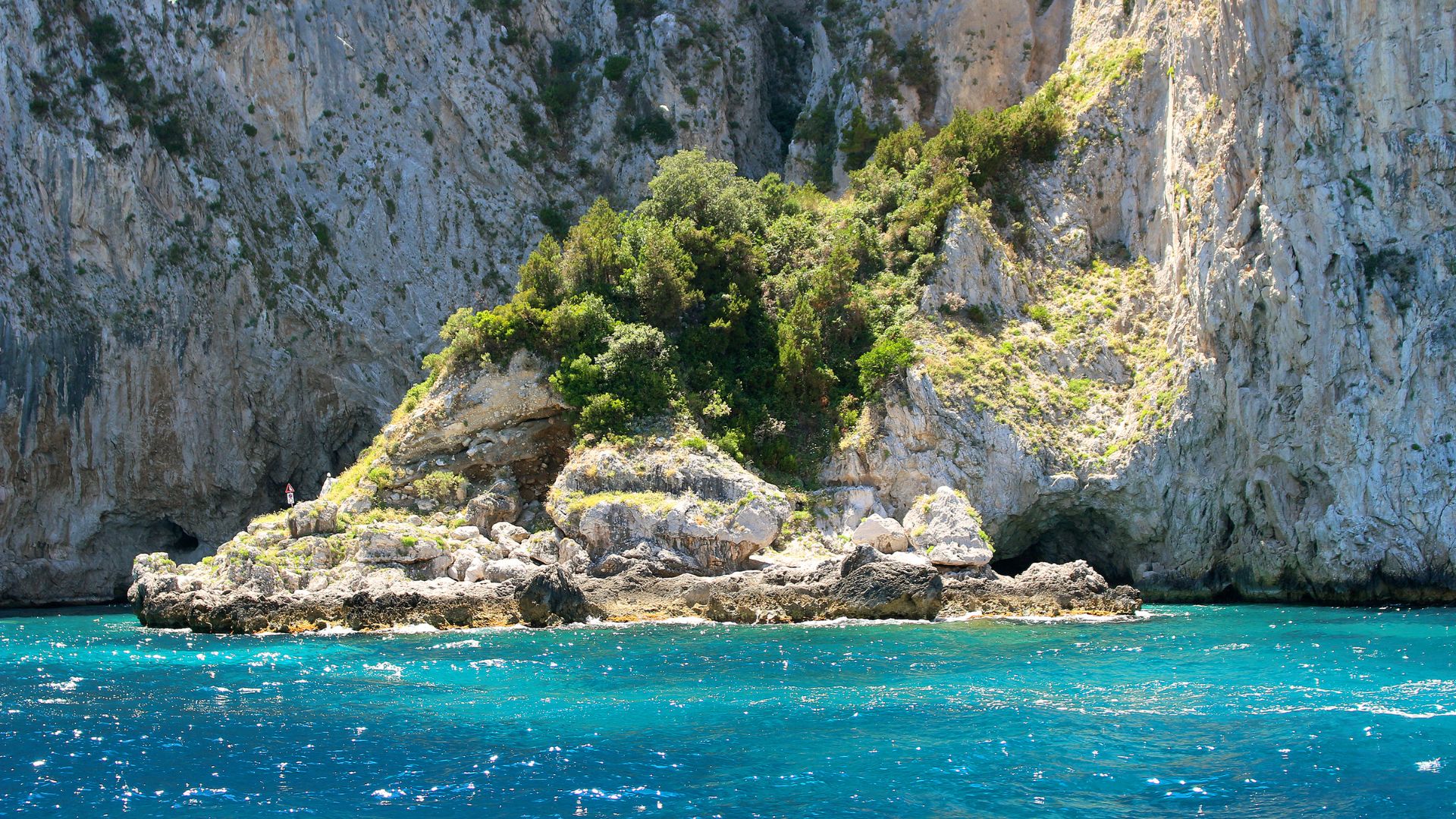
The Ancient Statues and Their Copies
The statues found in Tiberius’ villa represent an elaborate ensemble of mythological scenes. Dating to the 1st century A.D., these marble masterpieces decorated the emperor’s private swimming grotto.
The most impressive sculptures depict scenes from Homer’s Odyssey, including a massive representation of Odysseus blinding the Cyclops Polyphemus. These weren’t just random decorations but carefully planned artistic statements.
What makes these finds truly special is how well-preserved many pieces were despite being underwater for centuries. Some statues show signs of ancient repairs, suggesting they were highly valued even in Roman times.
Today, visitors can see these treasures in the Sperlonga Museum. Some pieces too fragile to move remain protected in their original location, with identical copies made for public display. This approach helps preserve the originals while still letting travelers experience Tiberius’ ancient luxury.
Planning Your Visit to the Ancient Sea Cave
The Blue Grotto on Capri offers visitors a chance to swim where Emperor Tiberius once enjoyed his private waters. Preparing ahead will make your experience in this historic cave both magical and stress-free.
Tickets and Costs
I found that visiting the Blue Grotto requires paying for both boat transportation and entrance fees. The entrance ticket costs about €15 per person, while the rowboat service from Marina Grande adds another €18-€20. This doesn’t include getting to Capri itself, which is an additional ferry cost from Naples (roughly €20-€25 one-way).
If you’re planning a full day on Capri, consider booking a combined island tour. Many tours include the Blue Grotto as part of a “Grand Tour” package, which typically ranges from €40-€60 depending on the season and extras included.
Remember to bring cash! Not all boat operators accept credit cards, especially the small rowboats that take you into the actual grotto.
Best Times to Explore the Grotto
I’ve learned through experience that timing is everything when visiting the Blue Grotto. Early morning (between 9-11 AM) offers two major advantages: smaller crowds and better lighting conditions inside the cave.
The grotto closes during rough seas, so checking weather forecasts before heading to Anacapri is essential. Summer months (June-August) provide more reliable access, but they also bring larger crowds and longer wait times, sometimes up to 2 hours!
My favorite months to visit are May and September. During these months, the water remains warm enough for a quick dip, and you’ll encounter fewer tourists than during peak season.
Avoid visiting on Italian holidays or summer weekends when locals from Naples flock to Capri, making the wait times for the grotto nearly unbearable.
